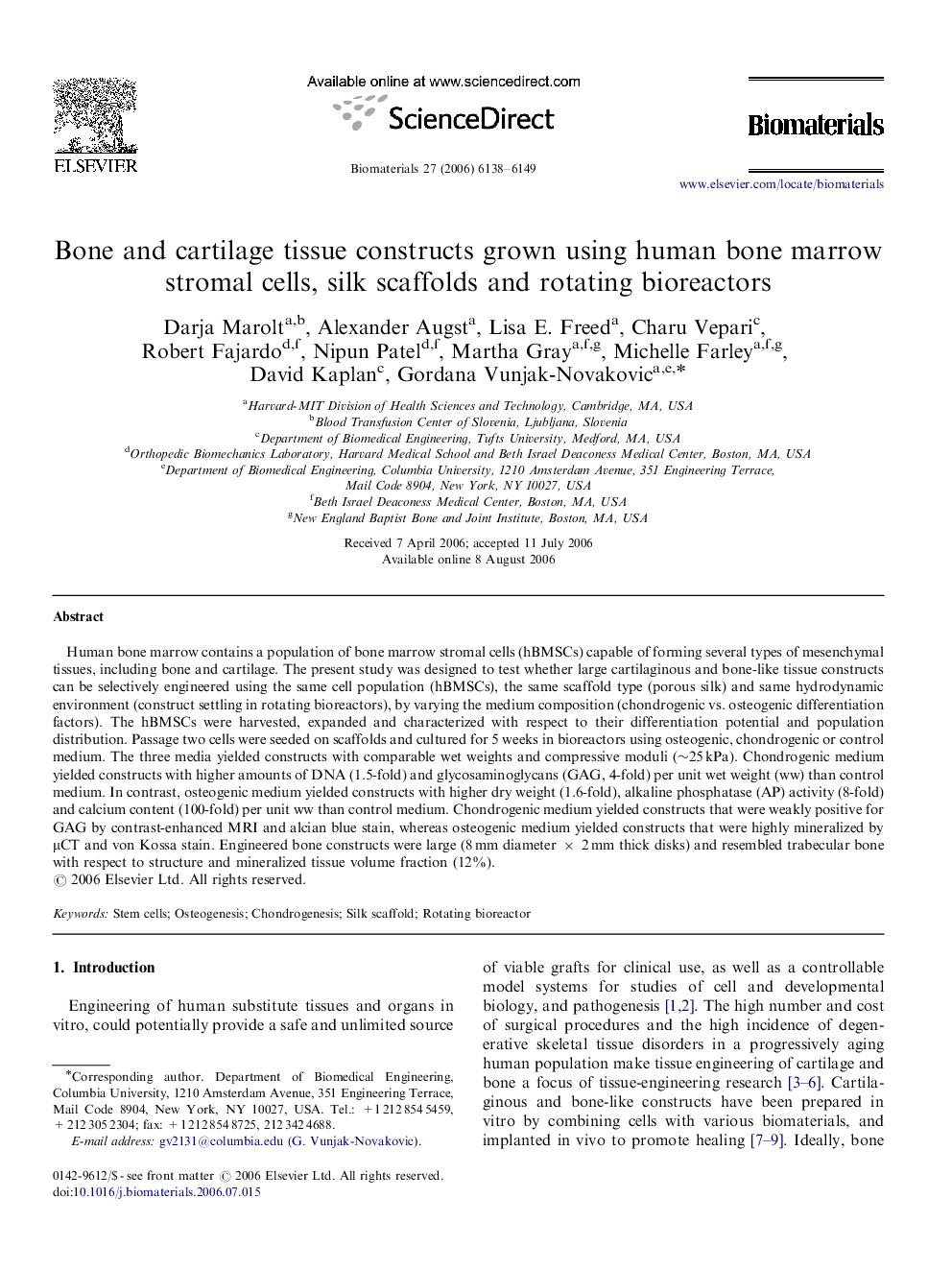| Article ID | Journal | Published Year | Pages | File Type |
|---|---|---|---|---|
| 11281 | Biomaterials | 2006 | 12 Pages |
Human bone marrow contains a population of bone marrow stromal cells (hBMSCs) capable of forming several types of mesenchymal tissues, including bone and cartilage. The present study was designed to test whether large cartilaginous and bone-like tissue constructs can be selectively engineered using the same cell population (hBMSCs), the same scaffold type (porous silk) and same hydrodynamic environment (construct settling in rotating bioreactors), by varying the medium composition (chondrogenic vs. osteogenic differentiation factors). The hBMSCs were harvested, expanded and characterized with respect to their differentiation potential and population distribution. Passage two cells were seeded on scaffolds and cultured for 5 weeks in bioreactors using osteogenic, chondrogenic or control medium. The three media yielded constructs with comparable wet weights and compressive moduli (∼25 kPa). Chondrogenic medium yielded constructs with higher amounts of DNA (1.5-fold) and glycosaminoglycans (GAG, 4-fold) per unit wet weight (ww) than control medium. In contrast, osteogenic medium yielded constructs with higher dry weight (1.6-fold), alkaline phosphatase (AP) activity (8-fold) and calcium content (100-fold) per unit ww than control medium. Chondrogenic medium yielded constructs that were weakly positive for GAG by contrast-enhanced MRI and alcian blue stain, whereas osteogenic medium yielded constructs that were highly mineralized by μCT and von Kossa stain. Engineered bone constructs were large (8 mm diameter × 2 mm thick disks) and resembled trabecular bone with respect to structure and mineralized tissue volume fraction (12%).
